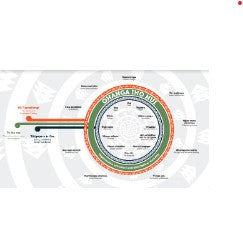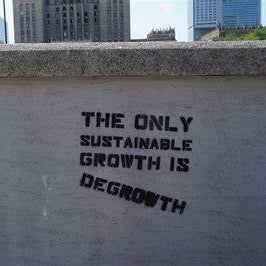Most people who are passionate about the climate practice a hobby or interest that highlights their belief in living a more sustainable life, for example cycling, veganism, upcycling or gardening.
My garden is my gym, my place for spirituality, my supermarket, and my school. The art of regenerative agriculture holds a lot of interest for me.
A dream I had when arriving on this whenua, was to transform it from paddocks back into bush and to grow wildflowers in abundance for bees. So far, I have achieved about seventy percent of this goal.
Native Planting
About 5 years ago, our family planted 1000 eco-sourced native trees with the help of Auckland Council's bio-diversity team.
We thought the planting at the time was hard, even though we used friends and the local school to help. The work since then to protect the trees from noxious weeds has been insane and back breaking. In both lockdowns, I have spent one and a half hours most days chopping down gorse the size of small trees. I now understand how hard it is to work the land.

Beside our baby native trees is a stand old pines and, underneath those, natives have started to pop up, probably in a 1:4 ratio to noxious weeds.
We have been removing the weeds in this area to allow the natives to grow, which has been a successful undertaking and unbelievably amazing to watch. My forest has taught me that Mother Nature is more effective than humans in healing herself. It is far more effective to allow her to do her thing. The trees she has produced for us are far more numerous and diverse than what we planted ourselves.
A year after we planted the natives, we repurposed wood fencing around non-native, non-food producing trees as a fence for a fruit forest. We have now planted forty fruit trees, ensuring that they produce food all year round. We know that in the long term there will be too much food for our family, and it is our hope that we can share, barter, or donate any excess into the wider community.
I have only recently come to learn about swales and, if I had my time again, we would have included these in our planting plan.
Wildflowers & Lavender
Propagating lavender and rosemary is about the easiest thing in the world to do. Lavender does need attention around soil quality and water, but after some trial and error, I have figured out how to get the best survival rate. My secret relies on planting a whole heap of sprigs together in a larger pot.

Fun observational fact! Lavender clearly likes company and doesn’t do well when you plant it on its own. Having the mix of both lavender and rosemary around our section means there is ample food for bees in Autumn and early Spring.
In addition, I have been planting bee pollinating plants as much as I can around the section and hoping they will reseed and grow, eventually, in abundance.
Soil Bacteria - Fertiliser
A recent find recommended by my upcycling partner in crime, Buffie Mawhinney, is The Weedy Garden on YouTube.
David Trood is a prize-winning commercial photographer who uses his videography talents to produce the most beautifully crafted videos around permaculture. Episode six of his show is devoted to the making and scientific reasoning behind soil bacteria. Not only is this fun to make, but it is cost effective and reduces the need for commercial fertilisers in our garden.
Part of my kids' weekly chores is to pour a bucket of diluted soil bacterial on each of our fruit trees. It appears to be quite effective as my lemon and plum trees had multitudes of blossoms this year.
Rain Water Harvesting
As an upcycler, I love to gather materials and have put great value on reusing 100 litre drums for water collection. We have a few of these on our section, but in the height of the Summer sun, a full drum only gives us a few days of watering.
So, we have made the decision to invest in larger water tanks. I recognise these are new rather than upcycled but hope that their emissions will be offset by the food that we grow over the coming years. We aim to use as much rainwater as possible around the section and significantly reduce our dam usage.
No decision is without a footprint.
Chook Management
Our family have been proud chicken owners for fourteen years and I wouldn’t know my life without them. While they drive me nuts when they escape and eat or scratch through my veggie garden, they are also a beautiful part of my circular garden. They eat my weeds and their poo goes into my soil bacteria and the compost heap.

Their food is sourced from a local farmer, their beds are made of pine needles from trees on our section and, to prevent mites, we sprinkle diatomaceous earth on their beds.
My Rooster, Whero, is core to our circularity. He helps us breed chooks so that we never run out.
Composting
Strangely enough I have only recently begun composting, mainly because of my girls (chooks) eating all our scraps and weeds.
There have even been times that we have brought in compost, which was crazy given our section size.
So, seeking advice, I called on Katrina from Blue Borage to come and teach me about hot composting. Now I have piles of compost in different parts of the garden, and it is my new hobby to nurture them.
I have scored a huge “waste” contributor through ShareWaste NZ where a micro green grower brings me his substrate when he has finished harvesting. I get oodles of spent peas, cress and sunflower microgreens which, when spread around, regrow and the coir medium that they grow in composts beautifully. Score!
Circular Food Production
I have recently started no-dig gardening, first using pea straw and then trying hay.
My conclusion is that pea straw is better to use because we get just the odd random pea growing from the pea straw, while the hay end can end up growing as unwanted grass in my vege garden.
Whatever you use, having the good thick layer of bedding stops the weeds growing and the worms underground go crazy in the microbes. It's lush!!
When growing veggies, I pack in as many as possible and let a reasonable amount go to seed at the end. This spreads random veggies all over my garden. It’s not that neat but it is productive and free.

My favourite seed throwing activity is to fire pumpkin seeds into random places and then watch them produce a years' worth of pumpkins while keep down the weeds on the section.
When other types of seedlings end up growing in random places, I replant them in a more coordinated fashion in the main garden
Weed Matting
Cardboard and mulch are best for weed suppression. If you have a really weedy section, put a couple of layers of cardboard down on the weedy area and heap the mulch in top. Leave for 6 months and you will have lush soil underneath.
My top tip is to get to know your local arborist and get free mulch to spread around your whole garden. It makes your section look beautiful and is spray free. Make sure you ask the arborist what the tree was though, as I once received privet mulch, which endlessly pops up annoying saplings.
Doing all the above inspires me to learn more and more about regenerative practices.
I am not keen on talk without action and gardening allows me to put my beliefs into practice. It's healthy in terms of fitness and diet, and it is cost effective and hugely beneficial for our environment.
Leave a comment (all fields required)
Comments will be approved before showing up.

